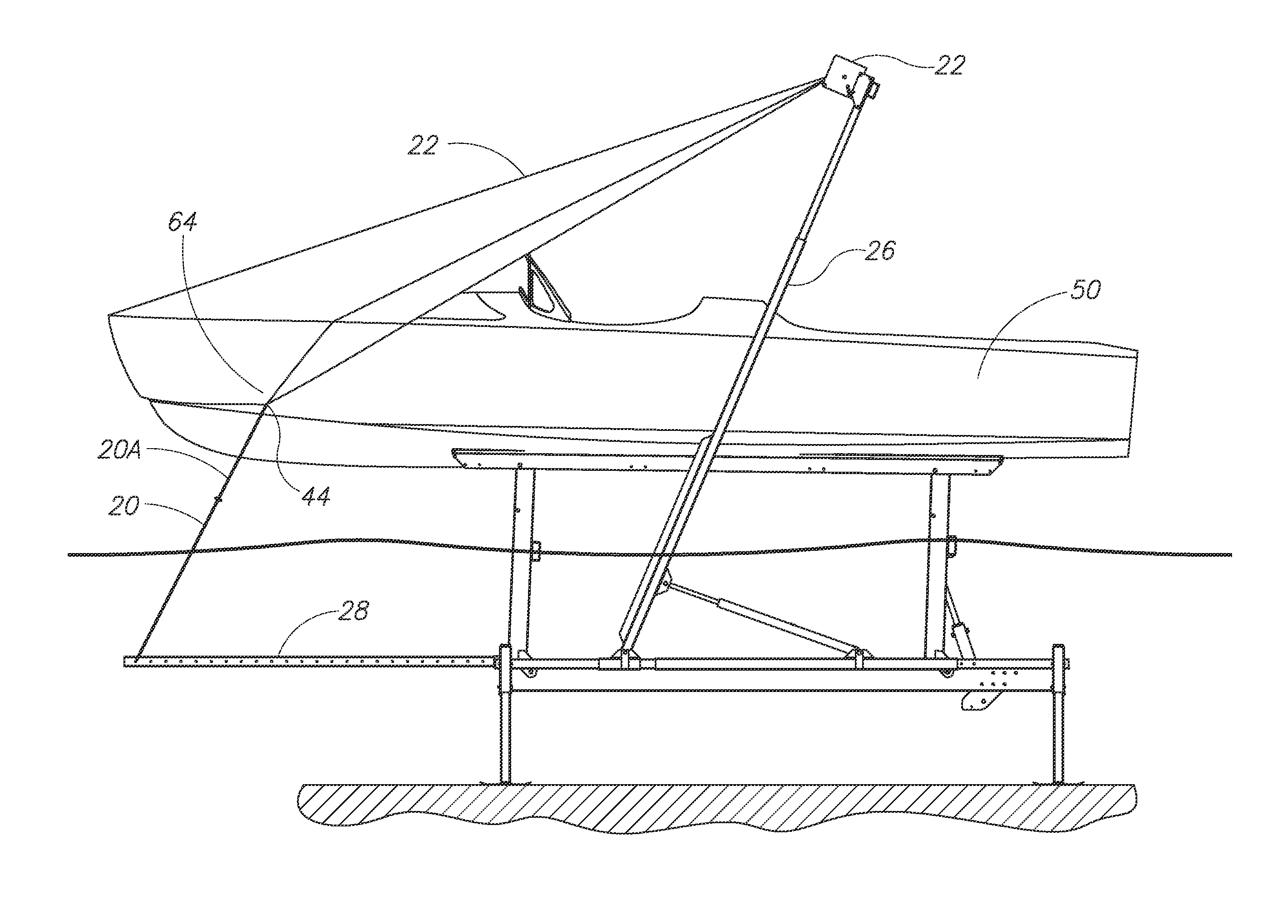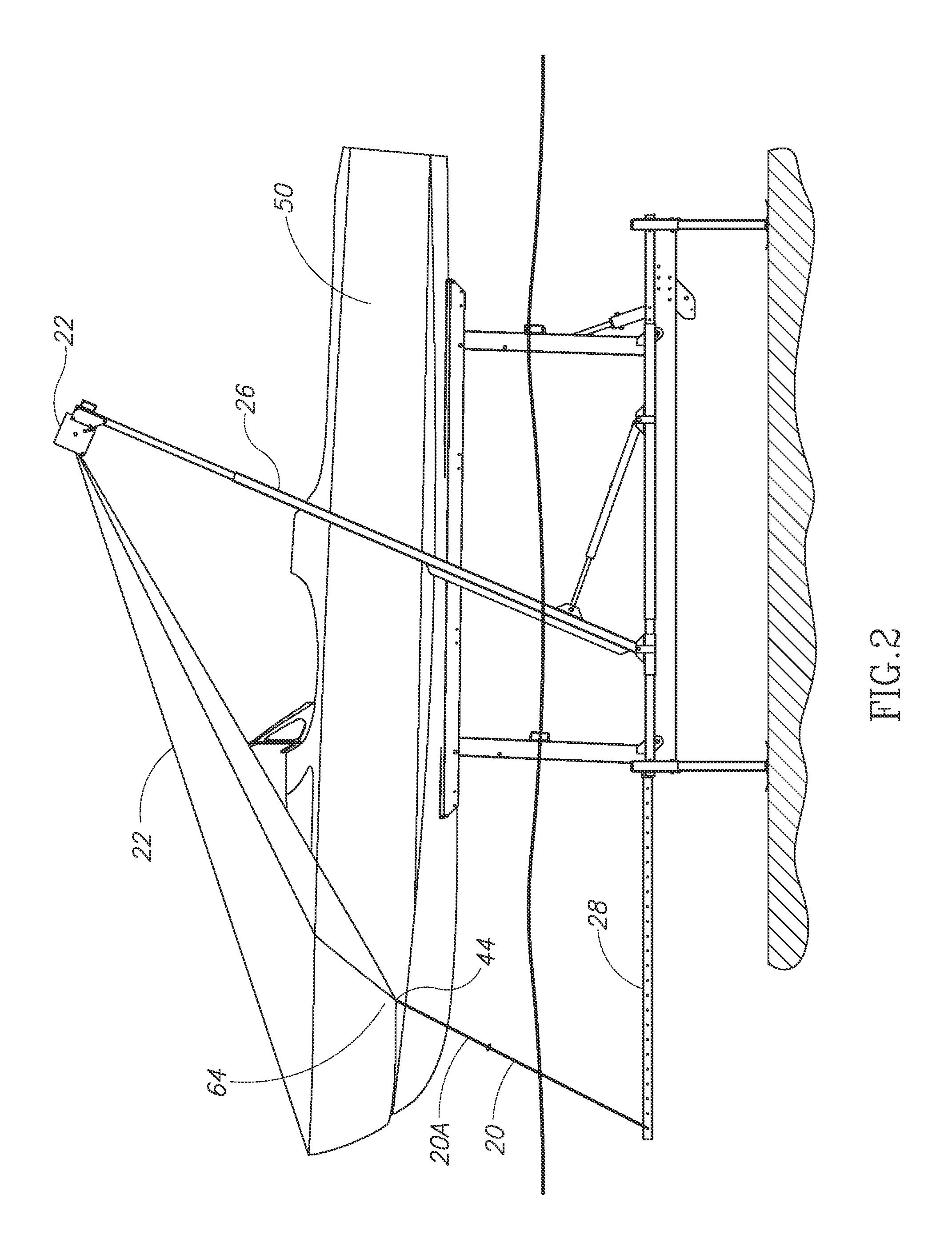Watercraft lift and automatic watercraft cover
a technology for watercraft and covers, applied in the direction of roofs, vessel construction, transportation and packaging, etc., can solve the problems of difficult installation of covers, large covers, and time-consuming installation of covers
- Summary
- Abstract
- Description
- Claims
- Application Information
AI Technical Summary
Benefits of technology
Problems solved by technology
Method used
Image
Examples
Embodiment Construction
[0040]The invention generally relates to a watercraft lift system generally used for lifting powerboats under 30 feet long, however, the design could be applied to other type boat and watercraft lift systems and other type boats and watercraft. U.S. Pat. No. 8,911,174 is incorporated herein by reference in its entirety.
[0041]The disclosed embodiments of the invention are illustrated for a watercraft lift system that allows for simple installation and removal of the cover, better protection for the boat or other watercraft being lifted, less view blockage, and better theft prevention. The combination of these features saves the boater time before and after boating, reduces hull cleaning, reduces hull fading, and allows the owner to store equipment, such as water skis inside the boat more securely.
[0042]According to the watercraft lift system disclosed herein, one may set the forward swing arm angle by fully extending the hydraulic cylinder, and fine-tune the swing arm angle by changi...
PUM
 Login to View More
Login to View More Abstract
Description
Claims
Application Information
 Login to View More
Login to View More - R&D
- Intellectual Property
- Life Sciences
- Materials
- Tech Scout
- Unparalleled Data Quality
- Higher Quality Content
- 60% Fewer Hallucinations
Browse by: Latest US Patents, China's latest patents, Technical Efficacy Thesaurus, Application Domain, Technology Topic, Popular Technical Reports.
© 2025 PatSnap. All rights reserved.Legal|Privacy policy|Modern Slavery Act Transparency Statement|Sitemap|About US| Contact US: help@patsnap.com



